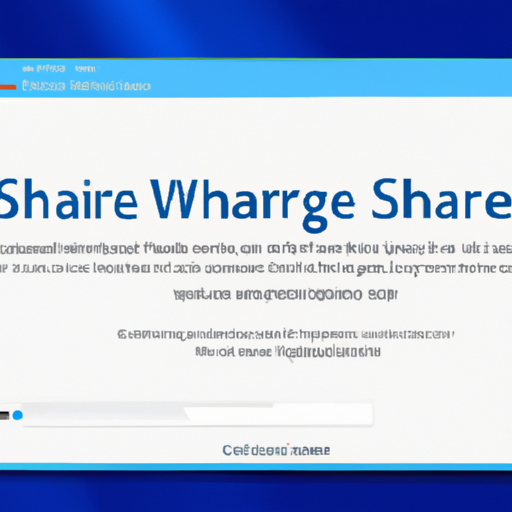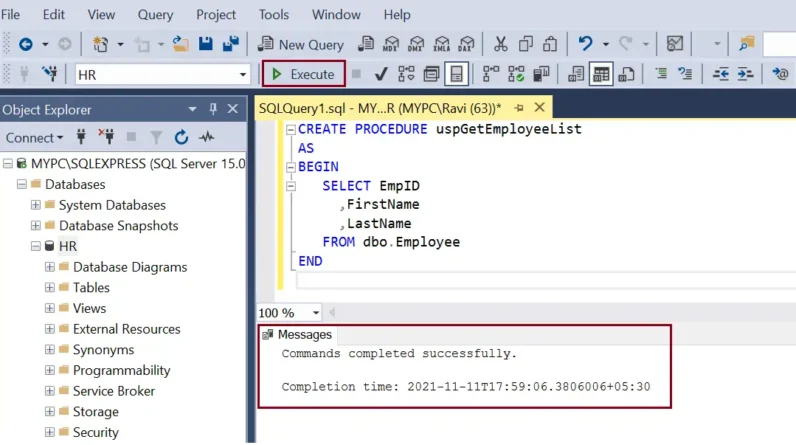
In this article, we will be discussing how to share files with Nearby Share on Windows. You will learn the step-by-step process of using this feature, which allows you to easily send files to nearby devices. Whether it’s photos, documents, or videos, we will guide you through the process, making file sharing a breeze. By the end of this article, you’ll be able to take advantage of this convenient feature and effortlessly share files with those around you.
Table of Contents
How to Share Files with Nearby Share on Windows
What is Nearby Share
Nearby Share is a convenient feature available on Windows 10 and later versions that allows you to quickly and easily share files and links with nearby devices. It uses a combination of Bluetooth and Wi-Fi technologies to enable seamless transfer of files between two devices in close proximity. Whether you’re at home, in the office, or out and about, Nearby Share simplifies the process of sharing files, eliminating the need for cables or complicated file transfer methods.
Definition and purpose of Nearby Share
The primary purpose of Nearby Share is to provide a hassle-free way to share files between devices running Windows 10 or later. It is especially useful for those moments when you need to quickly send a document, photo, or even a website link to a friend, colleague, or family member who is nearby. Nearby Share takes advantage of the local network to establish a connection between devices, allowing for reliable and efficient file transfers.
Benefits of using Nearby Share on Windows
There are several advantages to utilizing Nearby Share on your Windows device:
-
Effortless file sharing: With Nearby Share, you can share files with a simple click, eliminating the need for external devices or complicated setup procedures.
-
Wireless convenience: Nearby Share relies on wireless technologies such as Bluetooth and Wi-Fi, ensuring you can transfer files without the hassle of cables or physical connections.
-
Fast and reliable transfer speeds: Nearby Share utilizes a combination of Bluetooth and Wi-Fi Direct to achieve fast and reliable file transfers, allowing you to share files quickly and efficiently.
-
Versatility: You can share a wide range of file types, including documents, photos, videos, and links, making it versatile for various sharing scenarios.
-
Privacy and security: Nearby Share offers built-in privacy and security features, such as device visibility settings and encrypted transfers, ensuring your files remain secure while being shared.
Now that you understand what Nearby Share is and the benefits it offers, let’s dive into how you can set it up on your Windows device.
Setting up Nearby Share
To get started with Nearby Share, you need to enable it on your Windows device and configure the settings according to your preferences.
Enabling Nearby Share on Windows
Enabling Nearby Share is a straightforward process. Here’s how you can do it:
-
Open the Settings app by clicking on the Start menu and selecting the gear icon.
-
In the Settings window, click on the System category.
-
From the left sidebar, select Shared experiences.
-
Scroll down until you find the Nearby sharing section.
-
Click on the Change button to enable Nearby Share.
Configuring Nearby Share settings
Once you’ve enabled Nearby Share, you can customize its settings to suit your needs. Here are key settings you can configure:
-
Visibility: By default, Nearby Share is set to be visible to your contacts. You can adjust this setting to make yourself visible to Everyone nearby, My devices only, or Off for increased privacy.
-
Downloads: Choose whether to save received files to the Downloads folder or ask you each time for the save location.
-
Transfer method: Select your preferred transfer method between Automatically, Ask me, or Never ask. This determines whether Nearby Share should prompt you before each transfer or handle it automatically.
Now that you have Nearby Share enabled and configured, you’re ready to start sharing files with ease.
Sharing Files with Nearby Share
With Nearby Share set up on your Windows device, sharing files becomes a breeze. Follow these steps to share files using Nearby Share:
Selecting files to share
-
Open the File Explorer by pressing the Windows key + E or by clicking on the folder icon in the taskbar.
-
Navigate to the location of the file you want to share.
-
Right-click on the file and select Share from the context menu.
Choosing the recipient device
-
After clicking Share, a panel will appear on the right side of the screen, displaying nearby devices.
-
Choose the device you want to share the file with from the list.
Initiating the file transfer
-
Once you’ve selected the recipient device, click on it to initiate the file transfer.
-
On the recipient device, a notification will appear, indicating that a file is being shared.
-
The recipient can choose to accept or decline the file transfer.
-
If accepted, the file will be transferred and saved to the chosen location on the recipient device.
Congratulations! You have successfully shared a file using Nearby Share. But what if you’re on the receiving end?
Receiving Files with Nearby Share
If someone nearby wants to share a file with you using Nearby Share, here’s what you need to do to accept the transfer:
Accepting incoming file transfers
-
When a file transfer request comes in, you’ll receive a notification on your Windows device.
-
Click on the notification to open the Nearby Share panel.
-
Review the details of the file being shared, such as its name and size.
-
To accept the file, click on the Accept button.
Choosing the save location for received files
-
After accepting the file, you’ll be prompted to choose the save location.
-
Select the desired folder or location where you want to save the file.
-
Once you’ve chosen the save location, the file transfer will begin, and the file will be saved to the specified location.
With these simple steps, you can easily receive files from nearby devices using Nearby Share.
Managing Nearby Share Connections
As you use Nearby Share, you may want to manage your connected devices or remove/block certain devices from sharing files. Here’s how you can do that:
Viewing and managing connected devices
-
Open the Settings app.
-
Navigate to System > Shared experiences > Nearby sharing.
-
Under the Saved devices section, you’ll see a list of previously connected devices.
-
To remove a device, click on it and select Remove.
Removing or blocking devices
If there is a specific device you no longer want to receive files from, you can block or remove it from the Nearby Share settings:
-
Open the Settings app.
-
Navigate to System > Shared experiences > Nearby sharing.
-
Under the Blocked devices section, click on Add.
-
Select the device you want to block from the list of nearby devices.
By managing your connected devices and blocking unwanted transfers, you can ensure a clutter-free and secure file sharing experience with Nearby Share.
Troubleshooting Nearby Share
While Nearby Share is designed to work seamlessly, you may encounter some common issues. Here are a few troubleshooting tips to help you resolve them:
Common issues and solutions
-
Nearby device not detected: Ensure that both devices have Nearby Share enabled, are in close proximity, and have Bluetooth and Wi-Fi enabled.
-
Transfer takes too long: Check that both devices have a stable Wi-Fi or Bluetooth connection. You can also try restarting the devices or disabling and re-enabling Nearby Share.
-
File transfer fails: Double-check that the recipient device has enough storage space and verify that the file you’re sharing isn’t corrupted.
Ensuring compatibility and necessary settings
Before using Nearby Share, make sure that your device meets the compatibility requirements. Nearby Share is available on Windows 10 and later versions. Additionally, verify that Bluetooth and Wi-Fi are enabled on both devices and that they are running the latest updates.
Customizing Nearby Share
To enhance your experience with Nearby Share, you can customize certain aspects to align with your preferences. Here are a couple of customization options:
Adjusting visibility settings
You have the option to control who can see your device nearby. To adjust the visibility settings:
-
Open the Settings app.
-
Navigate to System > Shared experiences > Nearby sharing.
-
Under the Visibility section, choose the visibility option that suits your needs.
Setting preferred transfer method
You can also choose your preferred transfer method, whether to handle transfers automatically or prompt for each transfer:
-
Open the Settings app.
-
Navigate to System > Shared experiences > Nearby sharing.
-
Under the Transfer method section, select your preferred option.
By customizing these settings, you can tailor Nearby Share to work exactly the way you want it to.
Security and Privacy Considerations
Nearby Share incorporates security and privacy features to ensure your files are transferred securely. Here’s what you should know:
Understanding data encryption during transfers
Nearby Share uses a combination of Bluetooth and Wi-Fi Direct to establish a secure connection between devices. Transfers are encrypted to protect your files from unauthorized access.
Managing privacy settings
You have control over the visibility of your device when using Nearby Share. By adjusting the visibility settings, you can ensure that only the intended recipients can see and initiate file transfers with your device.

Alternatives to Nearby Share
While Nearby Share is a convenient file sharing feature on Windows, there are alternative options available for file transfer:
Exploring other file sharing options on Windows
Windows offers other built-in file sharing methods such as using network shares or utilizing cloud storage services like OneDrive or Dropbox.
Comparing Nearby Share with similar features
Other operating systems and platforms have similar file sharing features, such as Apple’s AirDrop on iOS and macOS and Google’s Nearby Share on Android devices. These options provide comparable functionality but may have different requirements and limitations.
Conclusion
Nearby Share is a valuable feature for Windows users seeking an efficient and hassle-free way to share files with nearby devices. With its wireless convenience, fast transfer speeds, and customizable settings, Nearby Share simplifies the process of sharing files in various scenarios. Whether you’re collaborating with colleagues, sharing vacation photos with friends, or sending documents to family members, Nearby Share offers a user-friendly solution for your file sharing needs. By familiarizing yourself with the setup process, file sharing procedures, and customization options, you can seamlessly integrate Nearby Share into your daily file sharing activities. So why not give Nearby Share a try and make sharing files on Windows a breeze?











